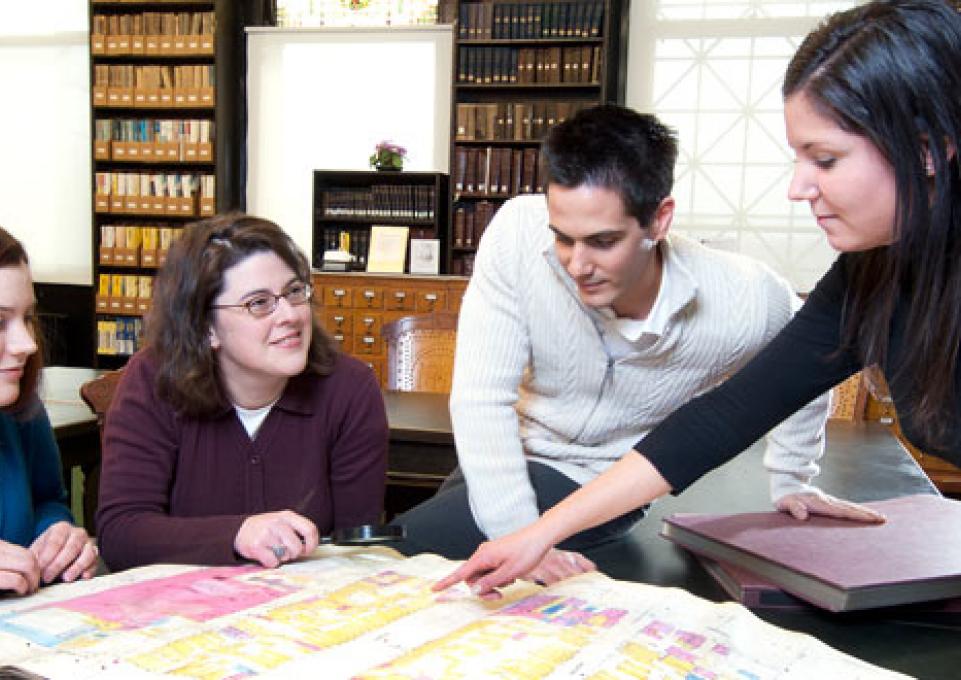
What does the Fraunces Tavern Museum in New York City have in common with the Museum of London in England and the National Museum of American History in Washington, D.C.? Buffalo State students and alumni from the museum studies program have interned or worked at each of them.
Now a new master of arts degree program in museum studies has been launched by Buffalo State’s History and Social Studies Education Department. “How appropriate that our program launches during Buffalo State’s Year of the Arts,” said Cynthia Conides, associate professor of history and social studies education and the director of the program. From September 2006 through 2010, Conides served as executive director of the Buffalo and Erie County Historical Society (BECHS). During her tenure, BECHS achieved reaccreditation by the American Association of Museums, the highest national recognition given to a museum.
The new program offers a lot of flexibility. Students who are accepted into the 33-credit-hour program are required to take three core courses: Theory and Method in Museum Studies; Museums and Society; and Principles of Creative Problem Solving. “These courses lay the foundation for the student’s further studies,” said Conides. Those studies can follow one of three tracks: collections management and curatorial practice, museum experience and education, or museum operations.
The collections management curriculum focuses on the acquisition, storage, archiving, and presentation of museum collections. It addresses questions such as what to acquire, how to store materials, and how to stage special-interest exhibitions such as BECHS’s popular Made in Buffalo exhibit. The visitor experience track draws on several disciplines, reflecting the needs and interests of people who visit museums. Interpreting a collection means providing context and explanation for items on view to the public, ultimately bringing about an “Aha!” moment. The museum operations track, which includes business courses, focuses on museum management and the specifics of public relations, marketing, and accounting.
“All students must complete an independent study and an internship,” said Conides, “as well as either a master’s thesis or a master’s project.” The multidisciplinary program can be tailored to meet students’ interests and career goals.
Western New York offers many opportunities for internships, although students have also interned in Washington, D.C. and New York City. “We are looking to expand opportunities for international internships, too,” said Conides. Museum studies students, who until now have been enrolled as graduate students in a history master’s program in multidisciplinary studies or a graduate certificate program, have found internships and employment at local institutions including not only the Buffalo State’s Burchfield Penney Art Center but also the Albright-Knox Art Gallery, the Greycliff Conservancy, BECHS, the Genesee Country Museum, and the Amherst Museum. One student helped a local corporation develop a plan for its archives.
“The importance of preserving our heritage and sharing knowledge is obvious,” said Conides. “In Buffalo alone, we have museums dedicated to history, science, and art. When you consider other culturally important sites like the Buffalo Naval and Military Park, the Darwin Martin House, and the collections in many area towns, you realize that almost everyone believes that certain artifacts deserve to be preserved, shared, and explained now and to future generations.”
